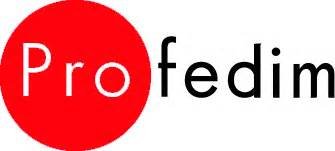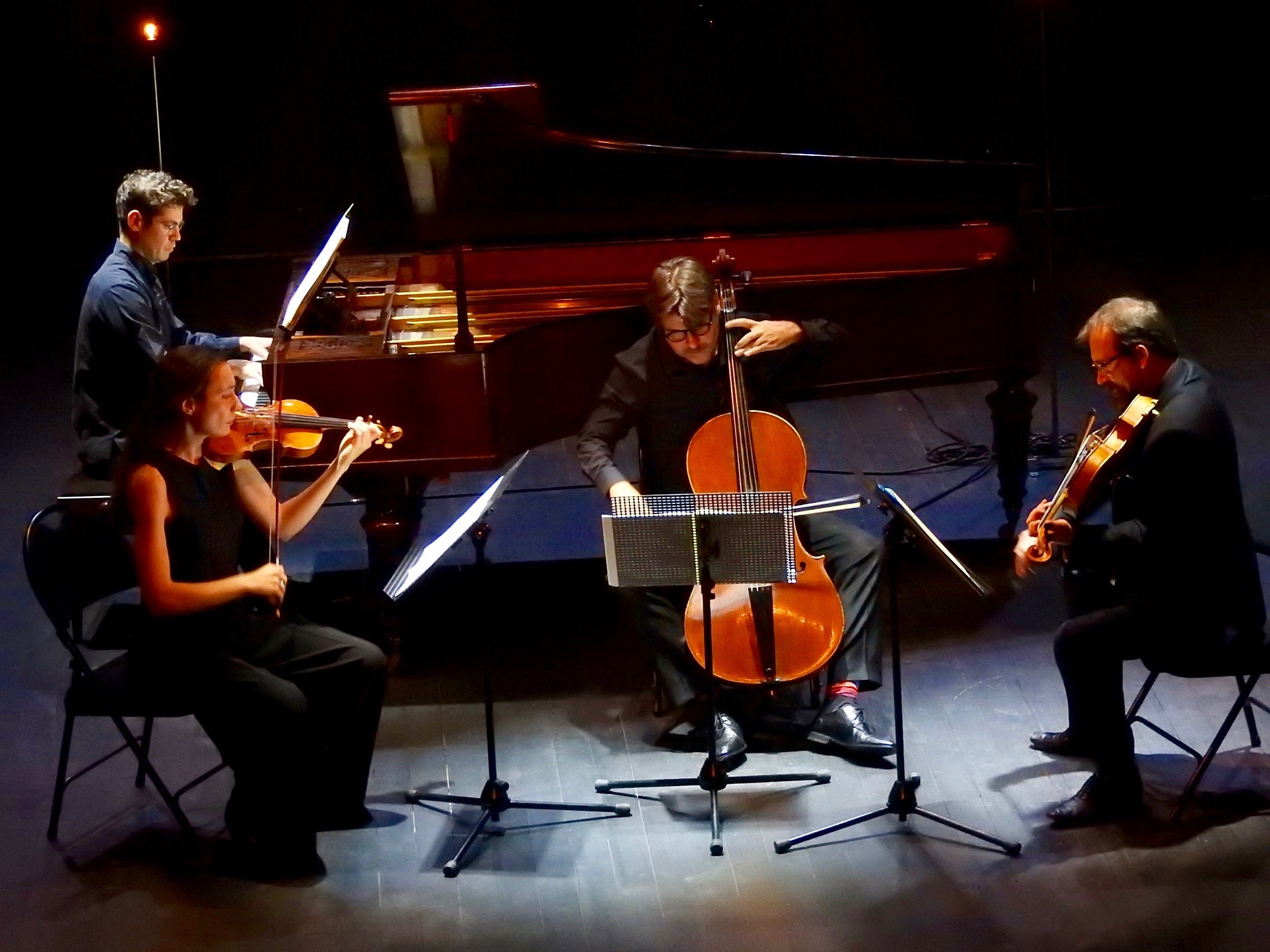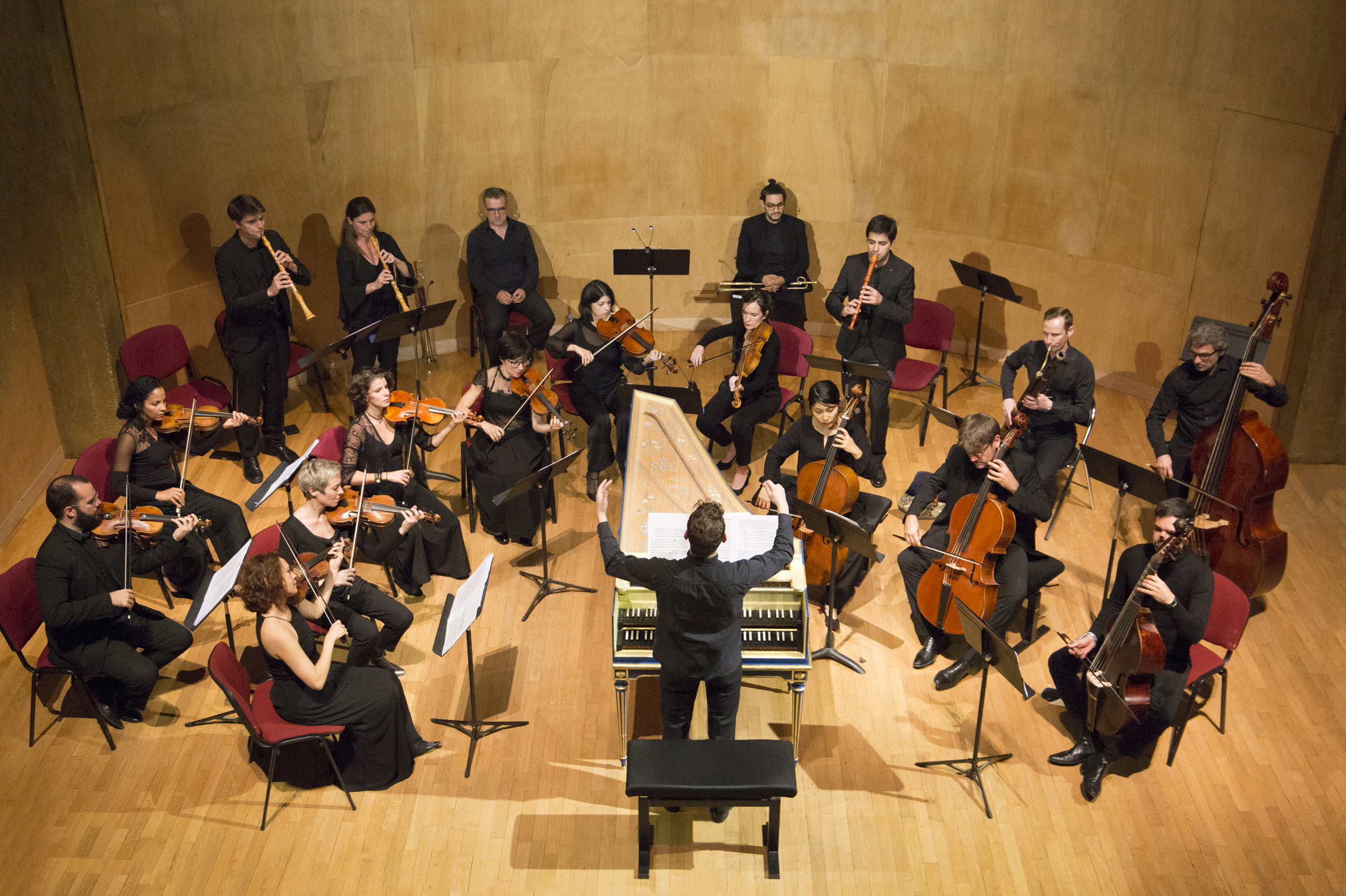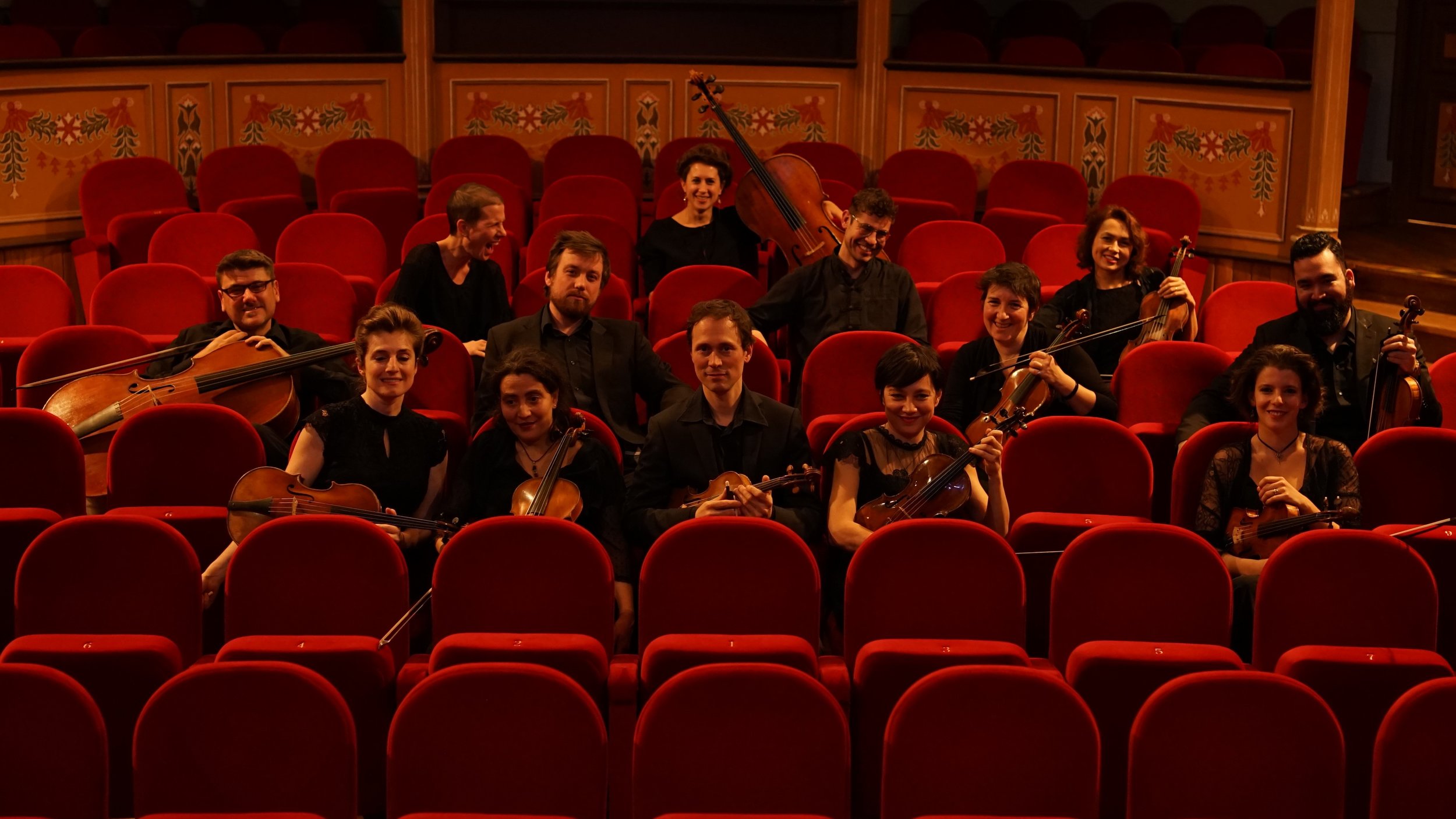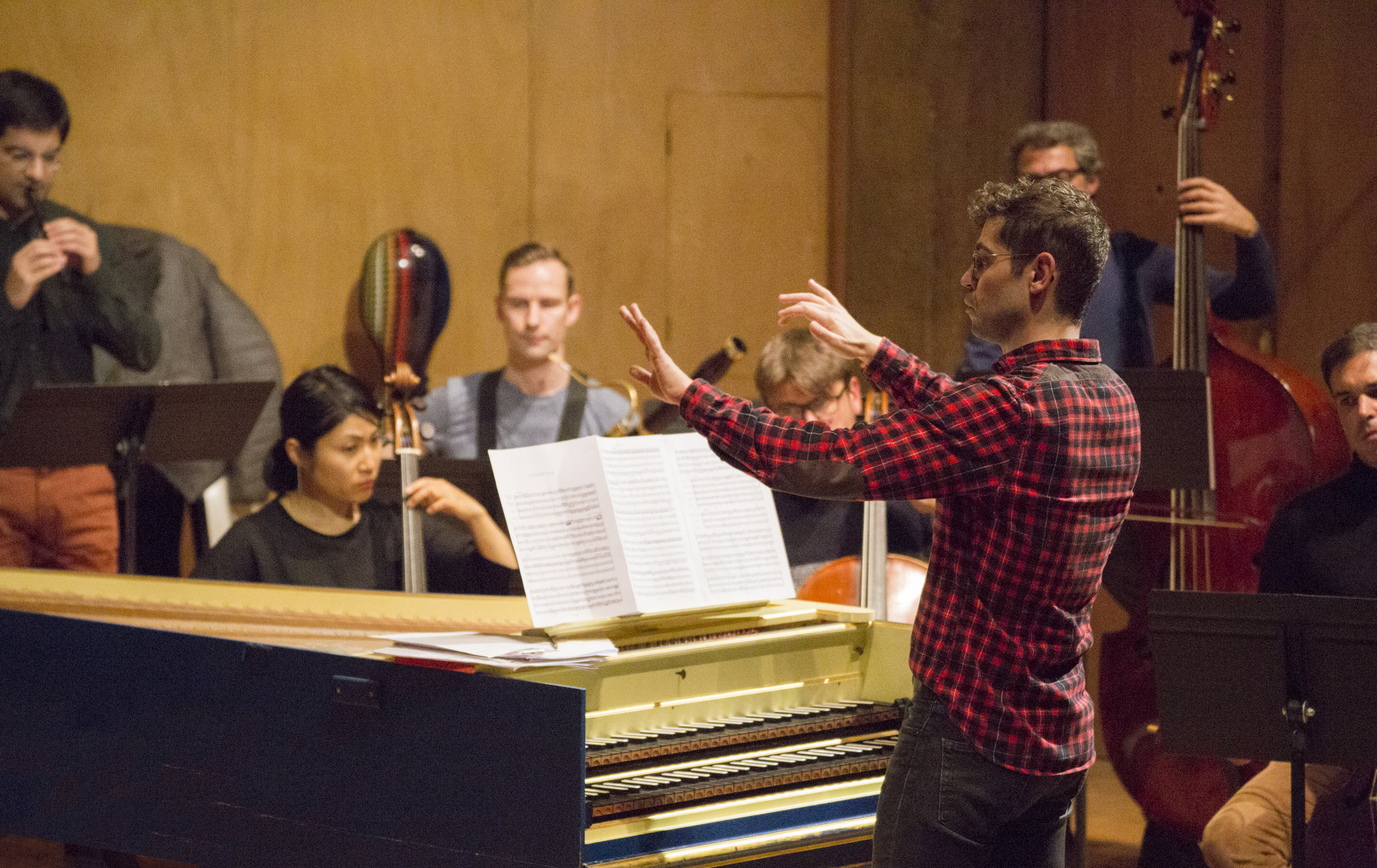
About
The ensemble Le Stagioni was created in 2017: it gathers together experienced young musicians, who all lead international careers both as soloists and with the great European early music ensembles.
They are united by a common desire to use their experience in a fresh new approach to performing music on period instruments. Led by the harpsichordist Paolo Zanzu, the ensemble can vary in form and size, with vocal music as a focal point. The repertoire of Le Stagioni is centred around the great works of the 17th, 18th and 19th centuries.
From the 2018-2019 season onwards Le Stagioni are in residence at the Théâtre du Rempart, in Semur-en-Auxois in Burgundy, with the support of the City of Semur-en-Auxois and the Côte-d’Or County Council.
The ensemble Le Stagioni is a member of FEVIS - Fédération des Ensembles Vocaux et Instrumentaux Spécialisés and Profedim.
The Stagioni projects have been supported by numerous partners and sponsors: Caisse des dépôts, Mécénat Musical Société Générale, Adami, Centre National de la Musique, Cité de la Voix - Centre national d'art vocal and Fondation BFC Solidarité de la Banque Populaire.
In 2021 and 2022, Le Stagioni are also supported by the DRAC Bourgogne-Franche Comté (France Relance plan).
Upcoming concerts
J.S. Bach, Sonates pour violon et clavecin obligé
Liv Heym, violin
Paolo Zanzu, harpsichord
Paris (France) - Théâtre de l’Alliance française
France Musique - “Générations France Musique, le live”
22 February 2025
Rameau and Mondonville
Saint-Quentin (France) - Musée Antoine Lécuyer
14 March 2025
Our Musical Project
Founding a new orchestra addresses the need to create a new sound, a new aesthetic and a new musical universe. The repertoire of Le Stagioni is centred around the 18th-century European High Baroque, with Handel at its core: a composer who, more than any of his contemporaries, was able to unify and fuse the musical styles and aesthetics of his time. Handel is a point of arrival.
But he also embodies a starting point. New currents took shape during the middle of the century all over Europe, from Naples to Dresden. European music departed from Baroque conventions and touched on new ground. New musical forms, such as the symphony, began to emerge and spread throughout the continent. Over a short period of time, the musical identity of Europe as a whole underwent a radical transformation.
Only a few decades of experiments and innovations separate Handel from Mozart: an indirect lineage, but one which, through Leo, Cimarosa, Sammartini and Johann Christian Bach, never loses its consistency in both structure and sound. Likewise, there is a continuity between the orchestra of Handel, that of Italian composers, and that of Haydn, Mozart and the young Beethoven.
Rediscovering this forgotten thread, reinventing a multi-faceted and malleable sound, finding a unique and original identity, building an orchestra grounded in the work of Handel and the Italian Baroque but that reaches out to Viennese classicism: this is the challenge and artistic goal of Le Stagioni.
Musical repertories
Right from the outset, the ensemble features both chamber music (Within a Furling of Edinboro ‘Town, Music at the time of Louis XV) and full orchestra (Handelmania, Il Duello d’Amore). Paolo Zanzu’s conception of his orchestra goes from the baroque to the classic orchestra, based on the amplification of a core of musicians for chamber music that is then increased by other musicians according to the needs. A high quality and ambitious orchestra demands the same in its instrumentalists and performing chamber music enables musicians to maintain this high level.
The foundational repertory concentrates on the baroque 18th century, and then the classical canon of the 19th century. Diverging from the conception of baroque music that narrowly associates two centuries as different from each other as the 17th and 18th, Le Stagioni defends the idea that the harmonic and aesthetic revolutions of the late 17th c are the harbingers of the 18th that carries them, almost unchanged, into the next century. Beyond a personal taste, this explains why the ensemble has built its repertory starting from the 18th century and proceeding into the next.
Le Stagioni offers as wide a selection as possible of instrumentalists and programs, including recitals, vocal and instrumental chamber music, orchestral projects and above all opera and oratorios. Their past and future programs attest to this vision and diversity.
Musicians involved in Le Stagioni
Emmanuelle de Negri, soprano.
Lucía Martín-Cartón, soprano.
Rachel Redmond, soprano.
Anna Reinhold, mezzo-soprano.
Lucile Richardot, mezzo-soprano.
Anthea Pichanick, mezzo-soprano.
Carlo Vistoli, countertenor.
Nicholas Scott, tenor.
Zachary Wilder, tenor.
Lisandro Abadie, bass-baritone.
Renato Dolcini, bass-baritone.
Tami Troman, violin (leader).
Liv Heim, violin (co-leader).
Roldán Bernabé-Carrión, violin.
Laura Corolla, violin.
Emmanuelle Dauvin, violin.
Jeffrey Girton, violin.
Charlotte Grattard, violin.
Izleh Henry, violin.
Clara Lecarme, violin.
Augusta McKay Lodge, violin.
Bénédicte Pernet, violin.
Yannis Roger, violin.
Raphaël Aubry, viola.
Myriam Bulloz, viola.
Delphine Grimbert, viola.
Marie Legendre, viola.
Marco Frezzato, cello.
Keiko Gomi, cello.
Jérôme Huille, cello.
Patrick Langot, cello.
Ronald Martin Alonso, gamba.
Hugo Abraham, double bass.
Michele Zeoli, double bass.
Tiam Goudarzi, recorder.
Giulia Barbini, traverso.
Marion Ralincourt, traverso.
Daniel Lanthier, oboe.
Laura Duthuillé, oboe.
Rodrigo López Paz, oboe.
Jani Sunnarborg, bassoon.
Gabriele Cassone, trumpet.





